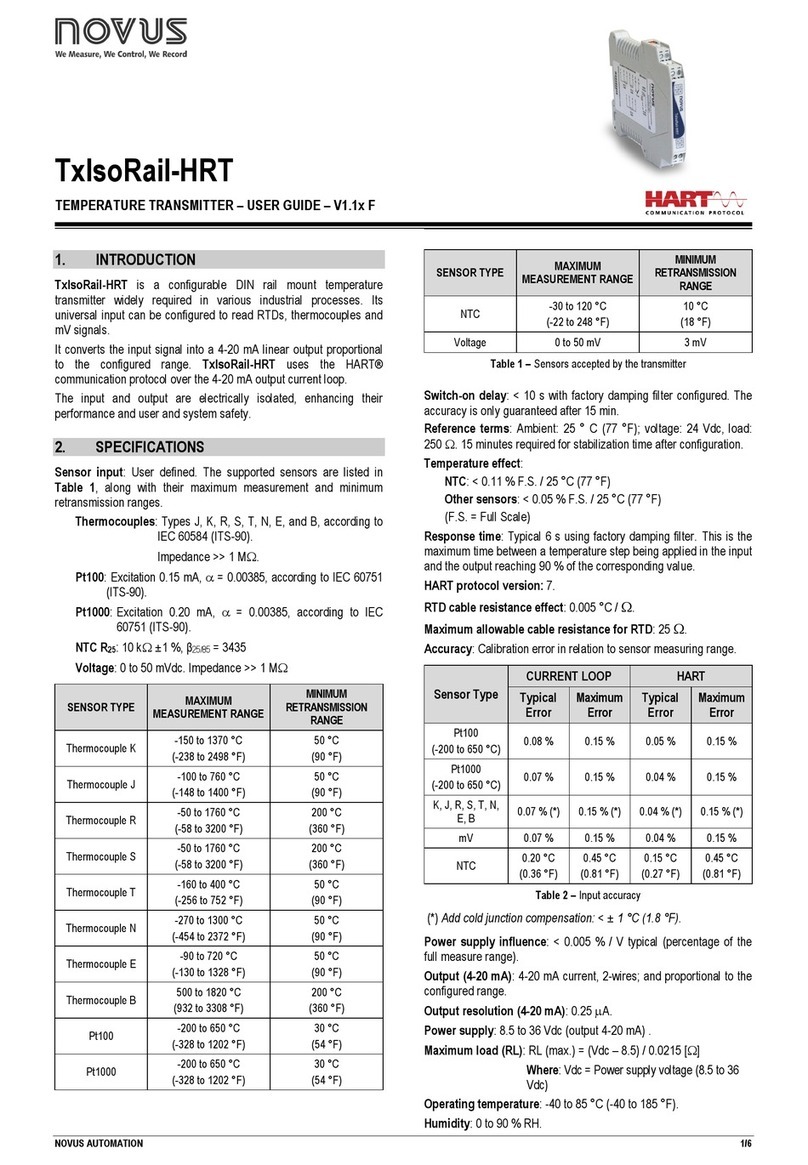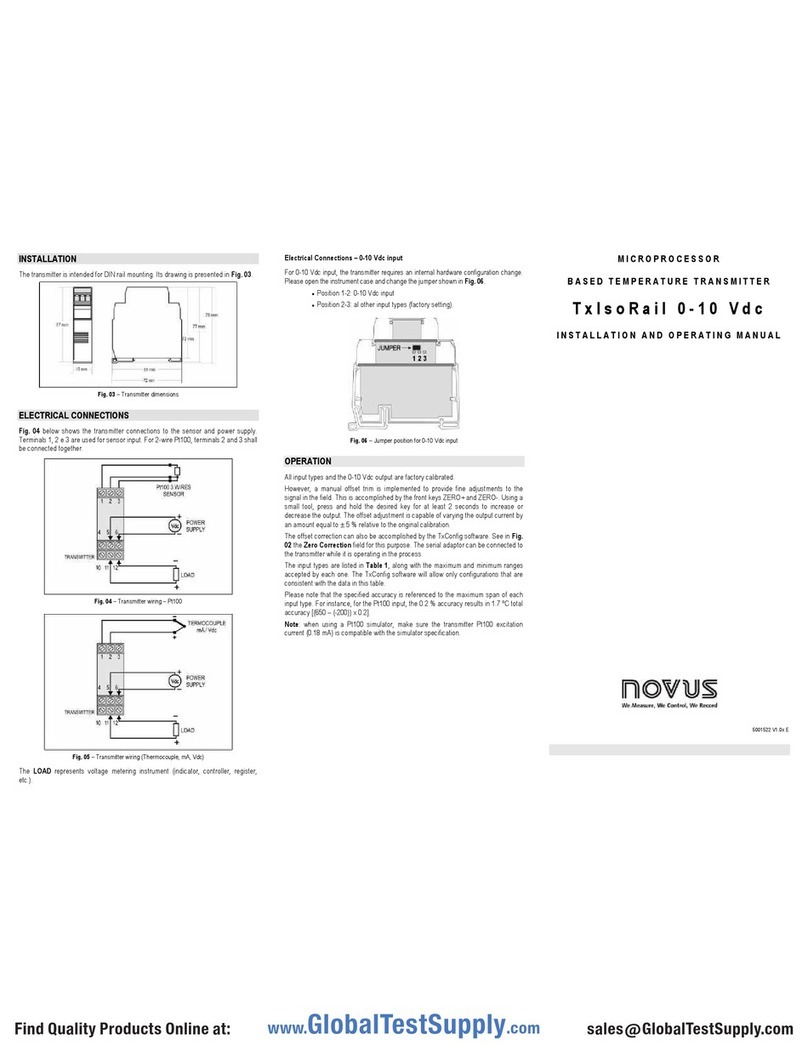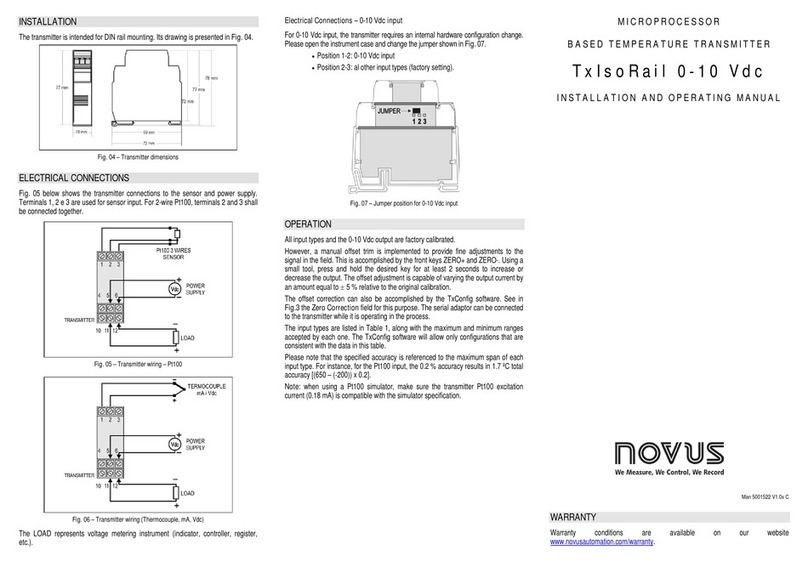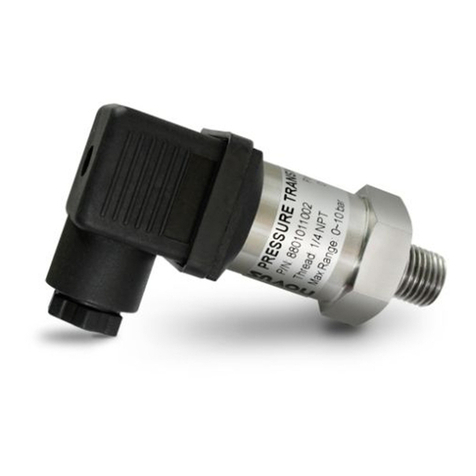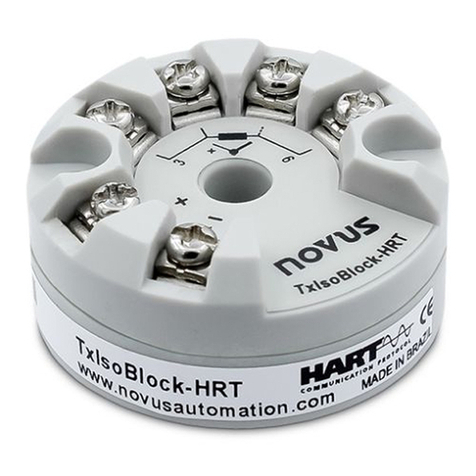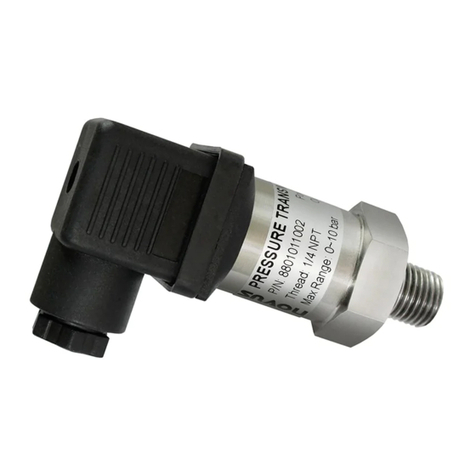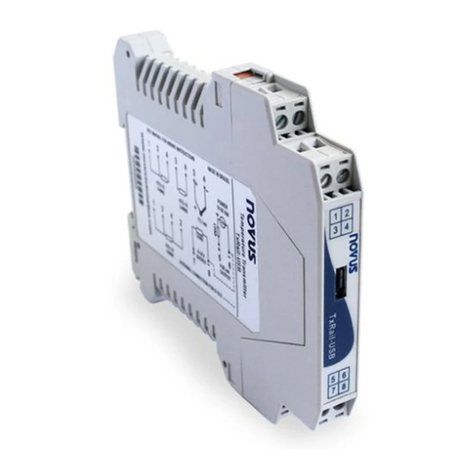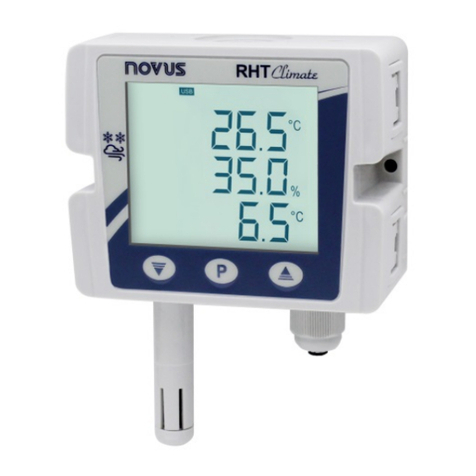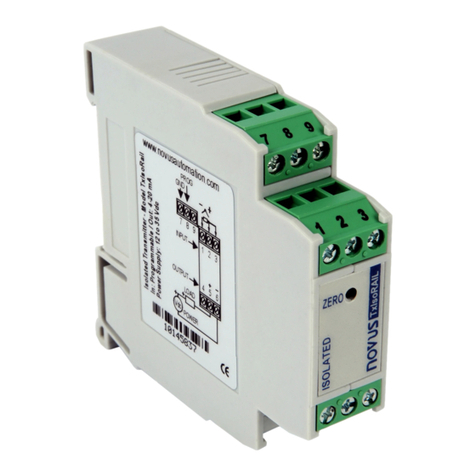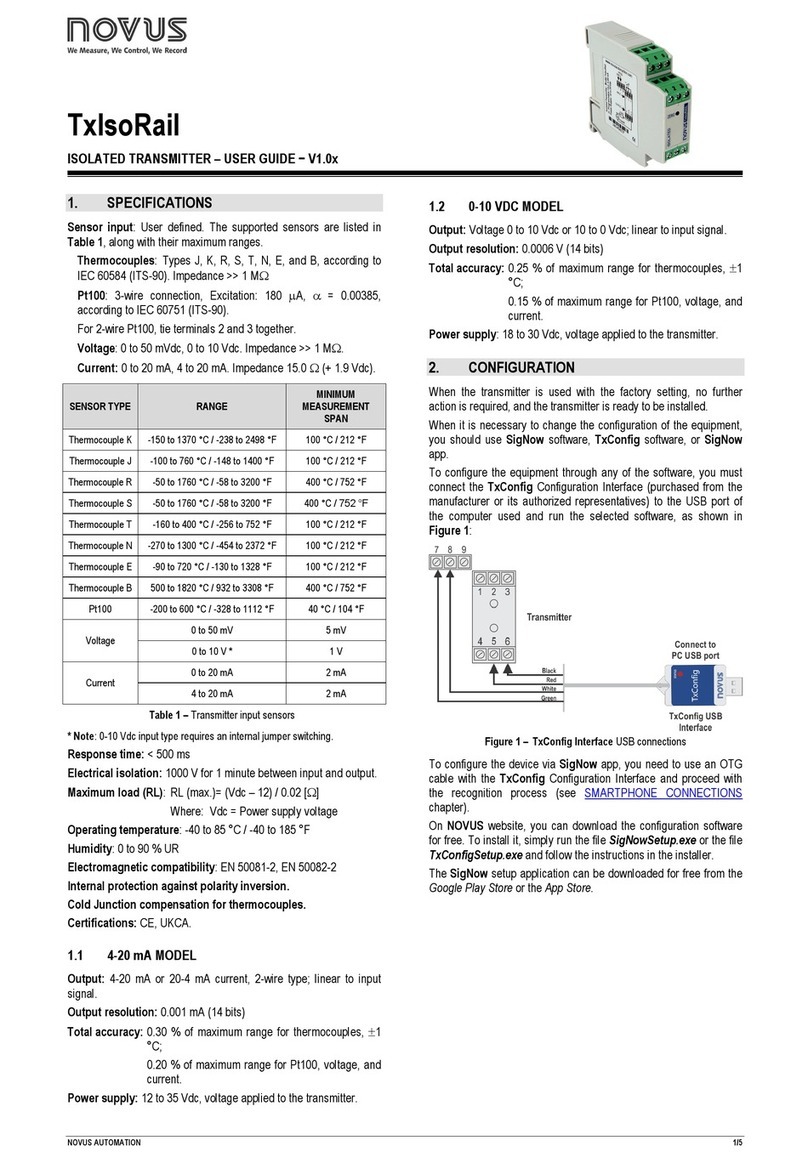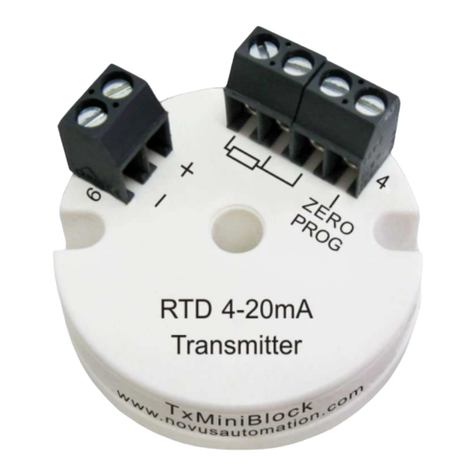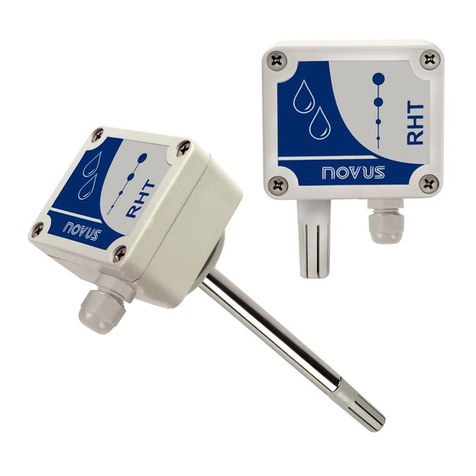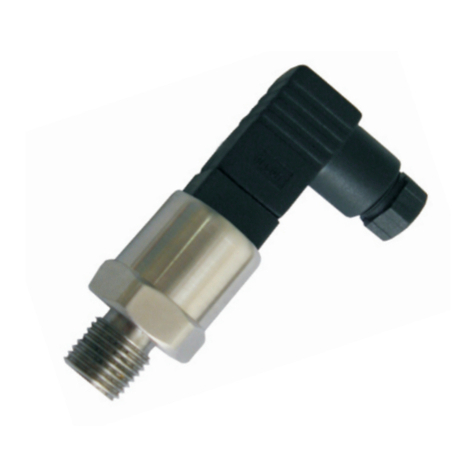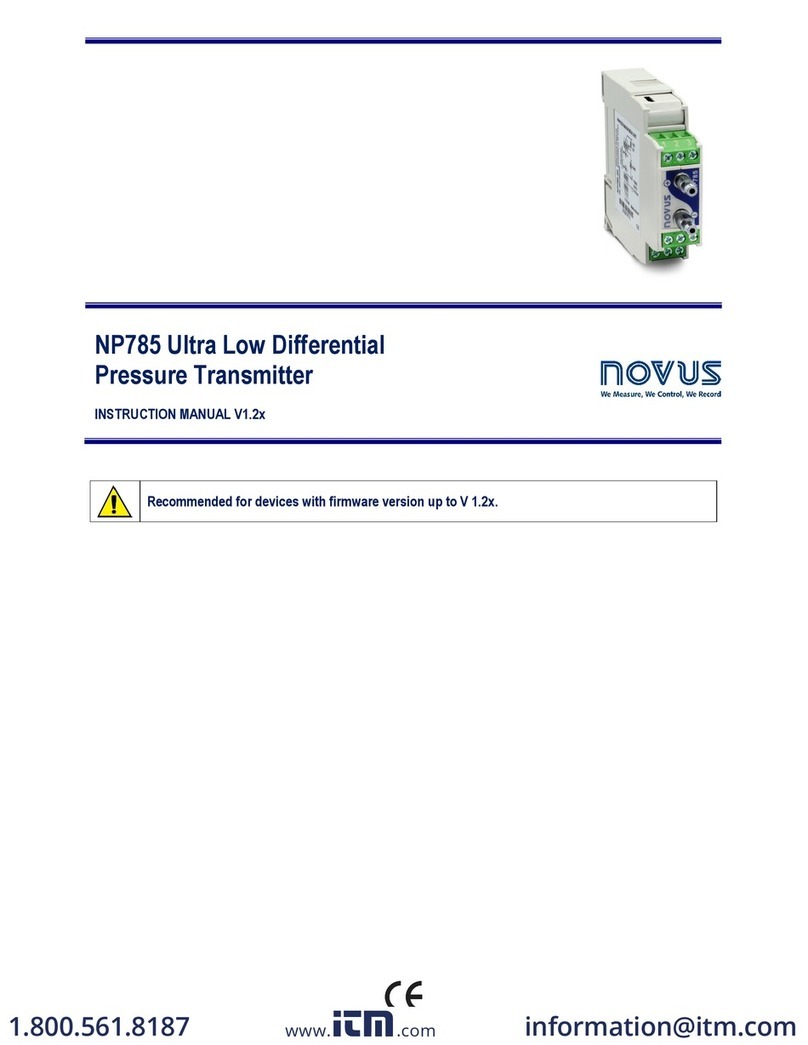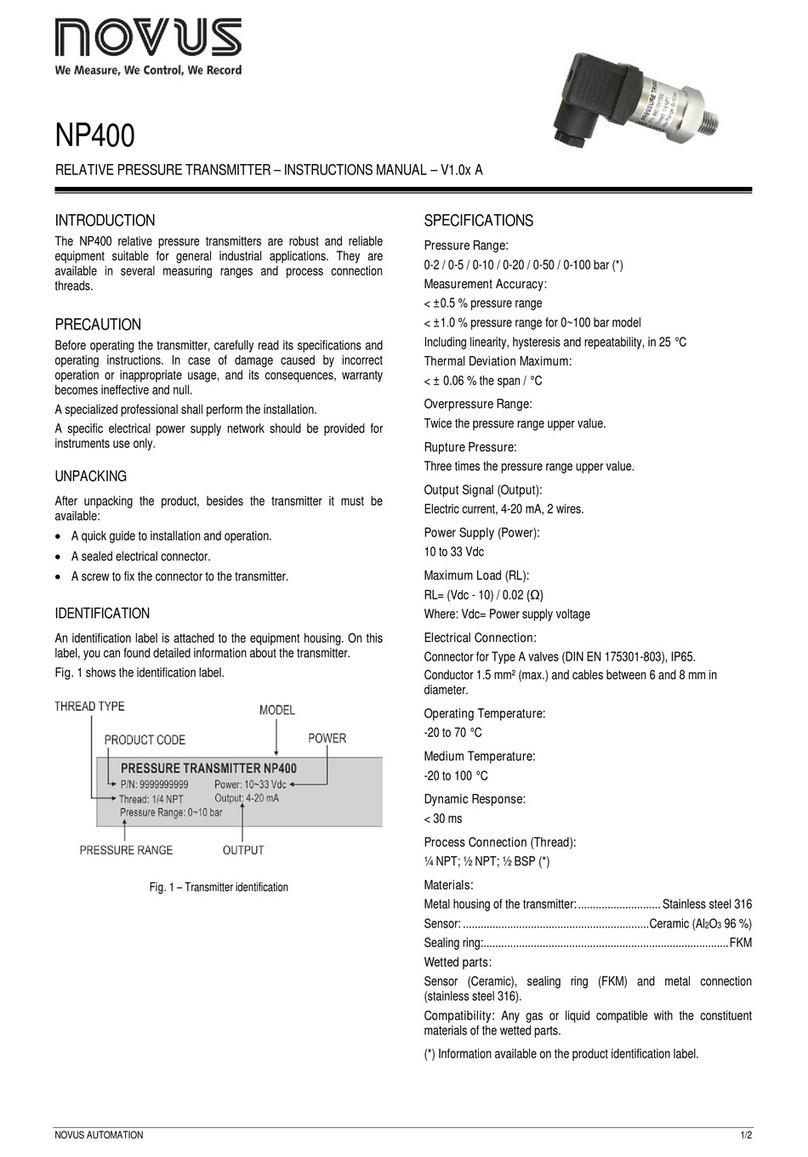
NOVUS AUTOMATION 2/52
1SAFETY ALERTS...............................................................................................................................................................................................3
2INTRODUCTION ................................................................................................................................................................................................4
3IDENTIFICATION ...............................................................................................................................................................................................5
3.1 MODELS WITHOUT DISPLAY ...................................................................................................................................................................5
3.2 MODELS WITH DISPLAY ...........................................................................................................................................................................5
3.3 DEVICE MODELS .......................................................................................................................................................................................6
4DISPLAY INDICATIONS ....................................................................................................................................................................................7
4.1 HOME SCREEN..........................................................................................................................................................................................7
4.2 DISPLAYING MAXIMUM AND MINIMUM VALUES ...................................................................................................................................7
4.3 DISPLAYING OTHER PSYCHROMETRIC PROPERTIES ........................................................................................................................7
4.4 SIGNALS .....................................................................................................................................................................................................8
5INSTALLATION ..................................................................................................................................................................................................9
5.1 MECHANICAL INSTALLATION ..................................................................................................................................................................9
5.1.1 DIMENSIONS ....................................................................................................................................................................................9
5.1.1.1 RHT Climate TRANSMITTER (WM MODEL) ............................................................................................................................. 9
5.1.1.2 RHT Climate TRANSMITTER (DM MODEL) ............................................................................................................................ 10
5.1.2 REMOVING AND INSTALLING THE FRONT COVER...................................................................................................................10
5.2 ELECTRICAL INSTALLATION..................................................................................................................................................................11
5.2.1 INSTALLATION RECOMMENDATIONS.........................................................................................................................................11
5.2.2 SPECIAL PRECAUTION.................................................................................................................................................................11
5.2.3 ELECTRICAL CONNECTIONS.......................................................................................................................................................11
5.2.4 USB CONNECTION ........................................................................................................................................................................11
5.3 SENSOR MAINTENANCE ........................................................................................................................................................................12
5.3.1 PRECAUTIONS WITH SENSORS..................................................................................................................................................12
5.3.2 SENSOR REPLACEMENT .............................................................................................................................................................12
6PARAMETER CYCLES....................................................................................................................................................................................14
7CONFIGURATION............................................................................................................................................................................................15
7.1 ANALOG OUTPUTS 0VT1 / 0VT2 ..........................................................................................................................................................15
7.2 ALARM OUTPUTS ALM1 / ALM2 .............................................................................................................................................................17
7.3 BUZZER CONFIGURATION CYCLE ........................................................................................................................................................20
7.4 HMI CONFIGURATION CYCLE................................................................................................................................................................22
7.5 DIAGNOSTIC CYCLE ...............................................................................................................................................................................24
7.6 COMMUNICATION CYCLE ......................................................................................................................................................................25
7.7 GENERAL CONFIGURATION CYCLE .....................................................................................................................................................26
7.8 INFORMATION CYCLE ............................................................................................................................................................................28
8PARAMETERS MAP ........................................................................................................................................................................................29
9USB INTERFACE .............................................................................................................................................................................................30
9.1 CONNECTING TO A COMPUTER ...........................................................................................................................................................30
9.2 CONNECTING TO A SMARTPHONE.......................................................................................................................................................30
10 SERIAL COMMUNICATION.............................................................................................................................................................................31
10.1 HOLDING REGISTER TABLE ..................................................................................................................................................................31
11 SIGNOW SOFTWARE AND APP ....................................................................................................................................................................38
11.1 SIGNOW SOFTWARE ..............................................................................................................................................................................38
11.2 SIGNOW APP............................................................................................................................................................................................38
11.3 STARTING SIGNOW.................................................................................................................................................................................38
11.4 CONNECTING TO THE SIGNOW SOFTWARE.......................................................................................................................................39
11.5 CONNECTING TO THE SIGNOW APP....................................................................................................................................................40
11.6 CONFIGURING THE DEVICE ..................................................................................................................................................................41
11.6.1 GENERAL / BASIC..........................................................................................................................................................................41
11.6.2 COMMUNICATION..........................................................................................................................................................................41
11.6.3 TEMPERATURE..............................................................................................................................................................................42
11.6.4 RELATIVE HUMIDITY.....................................................................................................................................................................42
11.6.5 OUTPUTS 1 AND 2 .........................................................................................................................................................................43
11.6.6 ALARMS 1 AND 2 ...........................................................................................................................................................................43
11.6.7 HMI ..................................................................................................................................................................................................44
11.6.8 DIAGRAM ........................................................................................................................................................................................45
11.6.9 FIRMWARE UPDATE......................................................................................................................................................................46
11.7 PERFORMING THE DIAGNOSTICS ........................................................................................................................................................47
12 TECHNICAL SPECIFICATIONS ......................................................................................................................................................................49
13 WARRANTY .....................................................................................................................................................................................................51
14 APPENDIX I – NOTIONS ABOUT PSYCHROMETRY ....................................................................................................................................52
